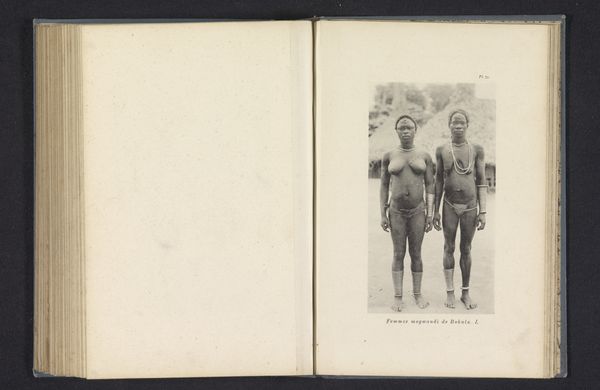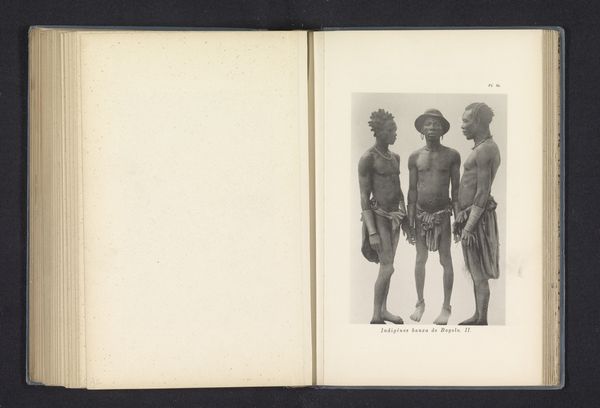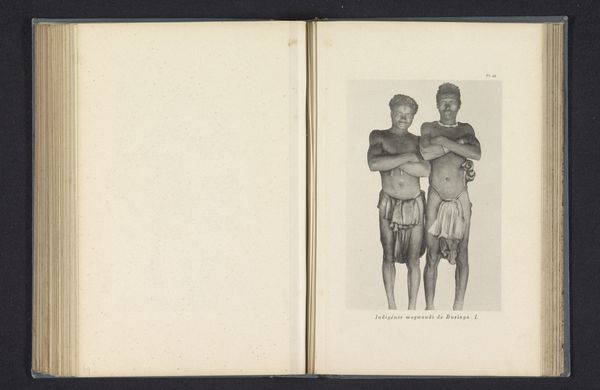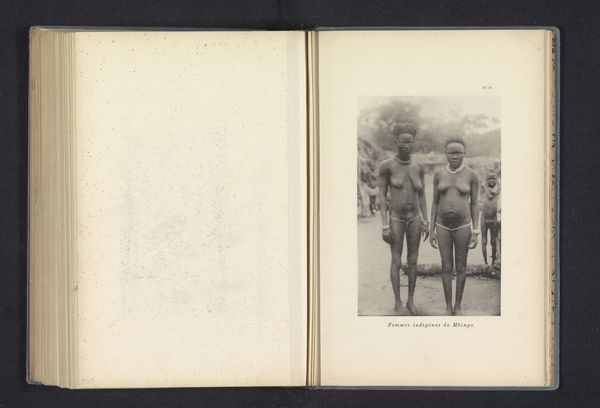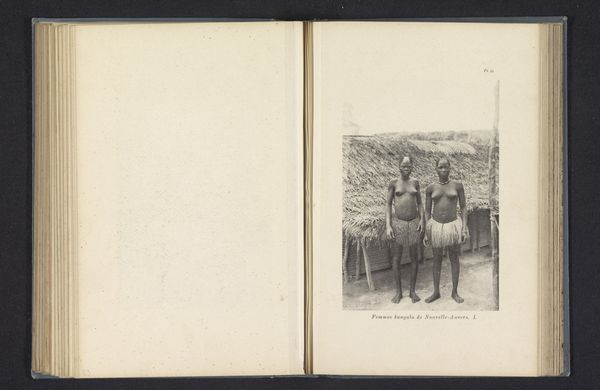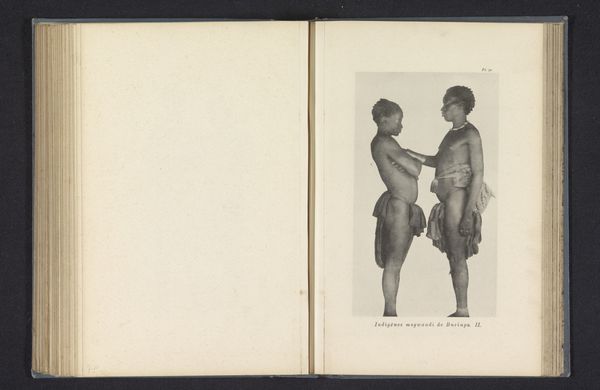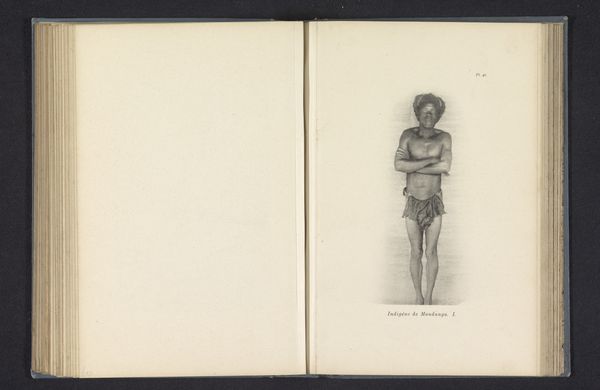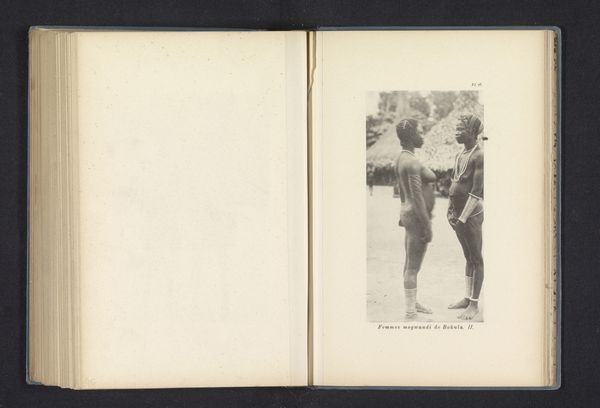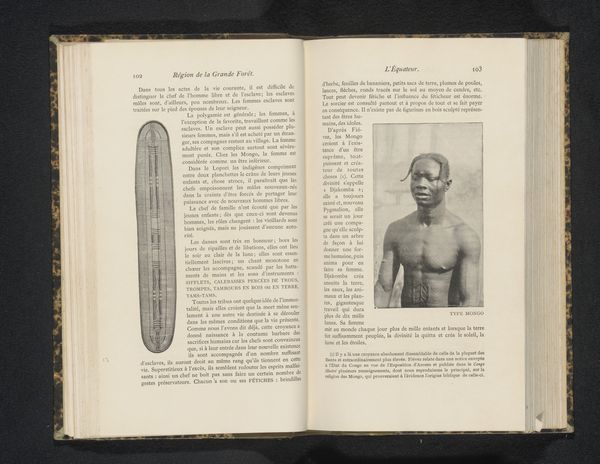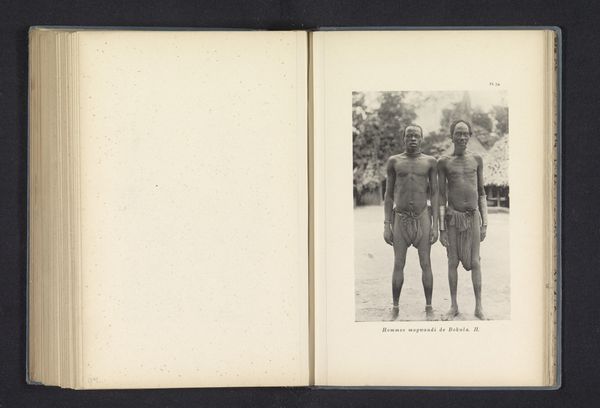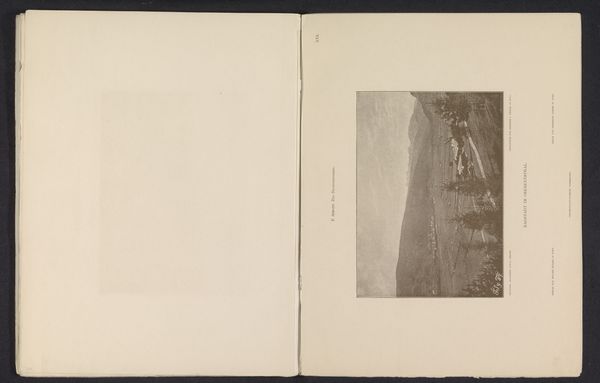
paper, photography
#
portrait
#
paper
#
photography
#
genre-painting
#
realism
Dimensions: height 163 mm, width 105 mm
Copyright: Rijks Museum: Open Domain
Curator: Here we have a photographic print dating to 1896 titled "Portret van twee mannen van de Ngbandi te Bokula," or "Portrait of two men of the Ngbandi in Bokula" by Franz Thonner. Editor: My first impression is of a stark vulnerability, but also a kind of defiant pride. The tonal range of this black and white portrait lends it a strange intimacy, even as it clearly originates from a colonial context. What medium did Thonner use for this image? Curator: This is a silver gelatin print mounted on paper. Photography at this time was often used as a tool for cataloging and documenting the peoples and places encountered during colonial expeditions. Editor: Precisely! The paper support itself, and the chemistry involved, speaks to global trade routes and the exploitation of resources that underpinned such expeditions. Do we know how the subjects viewed this encounter or the photographer’s aims? The social and political context is crucial here; what choices of materials and technologies were available at this moment? Curator: The image itself becomes a powerful artifact when we consider those themes. Notice, for example, the beaded necklace on the man to the left; in many African cultures, adornment serves as a significant emblem of status and identity, laden with ancestral symbolism and cosmological meaning. How do we view the placement, intentional or unintentional? Editor: This adds so much. I am now also noticing the woven skirts and the different patterns. Are the skirts purely utilitarian or another aspect of Ngbandi social status? Knowing this information alters my perception. This image begins to serve as a marker of how the tools available dictate image construction, a mirror reflecting how social dynamics shape material reality. Curator: It encourages us to ask, who were these men? What continuities and changes did their community face because of colonial activity? Editor: Ultimately, examining Thonner's process illuminates both his biases and, inadvertently, aspects of the subjects' resilience and their cultural continuities, allowing for an insightful discourse around both visible and suppressed histories.
Comments
No comments
Be the first to comment and join the conversation on the ultimate creative platform.
